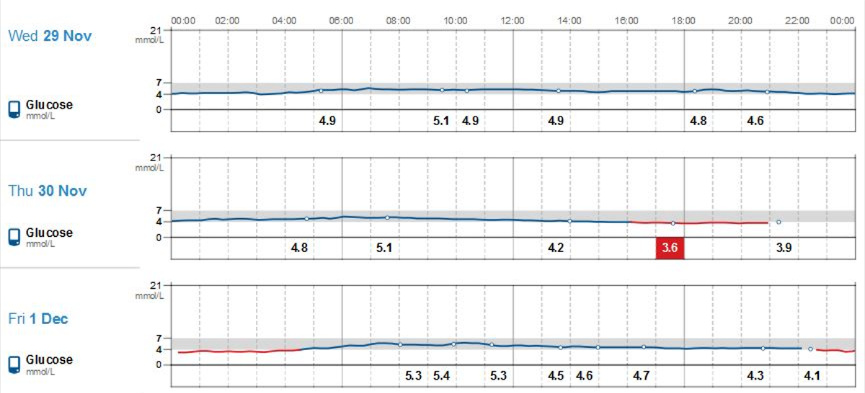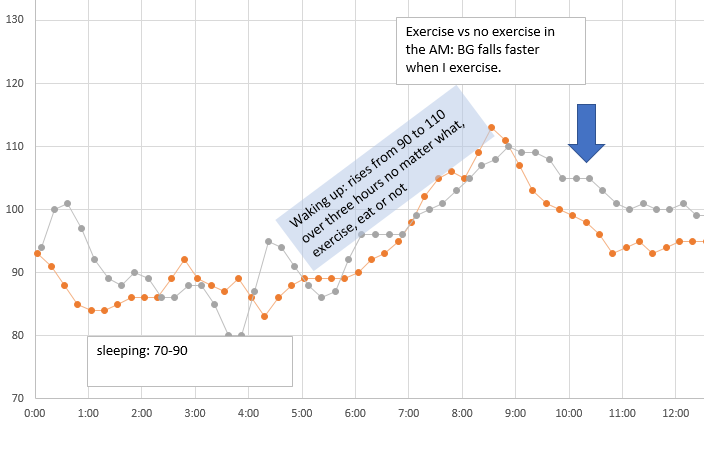Curious. My bg levels seem higher than I expected. Variability is also low (SD/mean=0.1) and other than when I exercise before bedtime I only get to about 70-75 at night. With exercise I drop occasionally 65ish for an hour or two. Waking up and walking around the house takes me from 85 to 100 and a long 3.5 mph walk will get that close to 110. If I eat a really sugary/carby thing I get a 150 reading in < 1 hour which is gone in another hour but most meals add 10-15 in 45 minutes and fall of afterwards…Erythritol really doesn’t do anything; neither do diet sodas.
There is general agreement between my ketomojo measurements and libre 2…most points are +/- 10%. However, the first two monitors definitely had LESS variability with the CGM monitors than the ketomojo. I try to measure the cgm about 4-5 minutes after the blood sticks…
What have you learned?





 ).
).